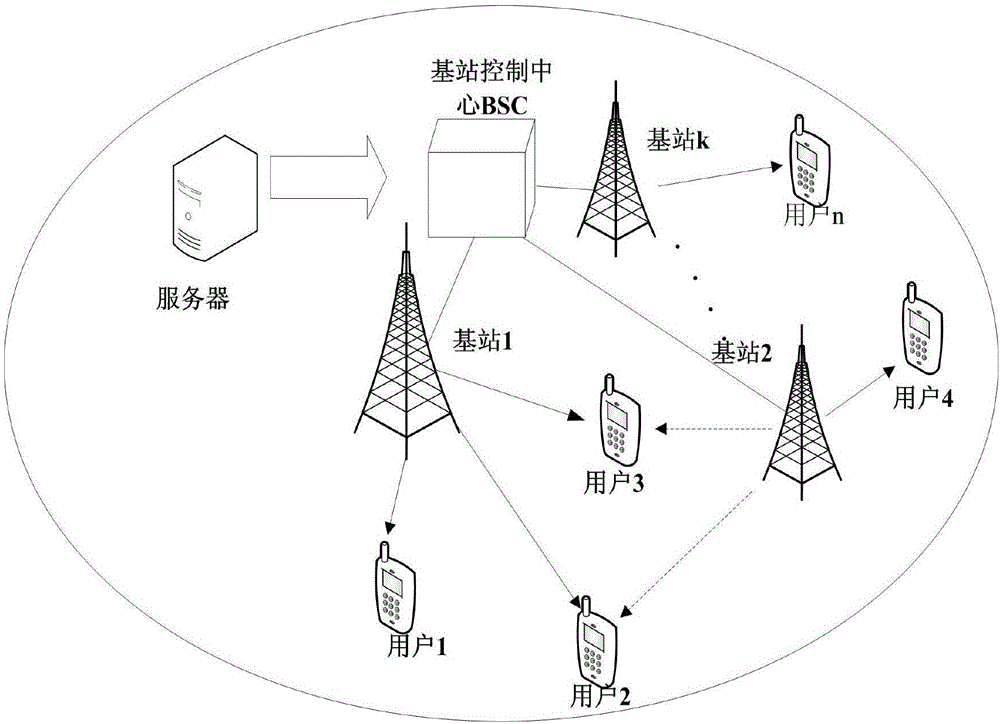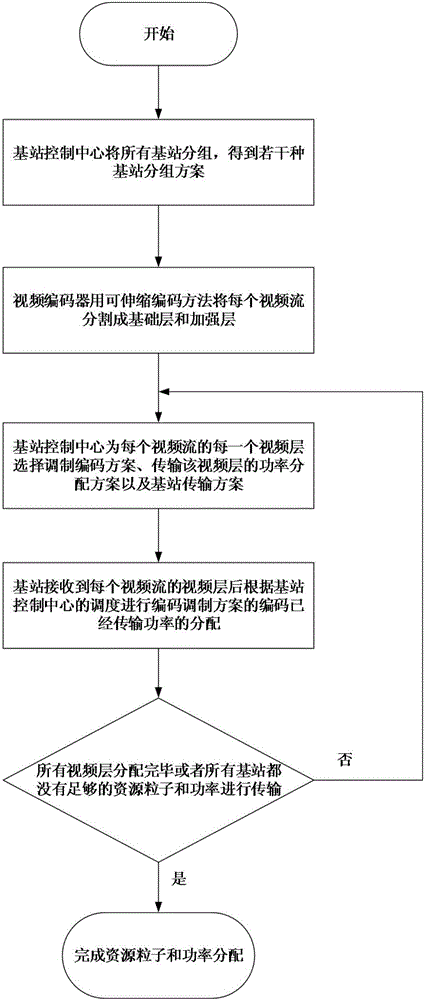Multicast resource allocation and transmission method based on scalable video in multi-base station heterogeneous network
A technology of heterogeneous network and transmission method, which is applied in the direction of transmission modification based on link quality, transmission system, and adjustment of transmission rate, etc., and can solve problems such as high complexity, low overall utility function value of the system, and failure to consider power allocation, etc.
- Summary
- Abstract
- Description
- Claims
- Application Information
AI Technical Summary
Problems solved by technology
Method used
Image
Examples
Embodiment Construction
[0061] In this implementation case, a multi-video stream scalable video multicast resource allocation, power allocation and transmission method in a multi-base station heterogeneous network is a resource allocation and power allocation scheme for data transmission in a multi-base station system, such as figure 1 As shown, the multi-base station system is composed of a server, a base station control center BSC, K base stations, and N mobile devices. The server is connected to the base station control center, and transmits the data to the base station control center through a reliable data link. The base station control center selects the appropriate coding and modulation scheme and power allocation for the base layer of the S video streams according to the principle of min{T·P} schemes and base station grouping schemes for transmission. For the enhanced layer, the base station control center designates a base station that can cover the subscribers of the video stream to the max...
PUM
 Login to View More
Login to View More Abstract
Description
Claims
Application Information
 Login to View More
Login to View More - R&D
- Intellectual Property
- Life Sciences
- Materials
- Tech Scout
- Unparalleled Data Quality
- Higher Quality Content
- 60% Fewer Hallucinations
Browse by: Latest US Patents, China's latest patents, Technical Efficacy Thesaurus, Application Domain, Technology Topic, Popular Technical Reports.
© 2025 PatSnap. All rights reserved.Legal|Privacy policy|Modern Slavery Act Transparency Statement|Sitemap|About US| Contact US: help@patsnap.com



